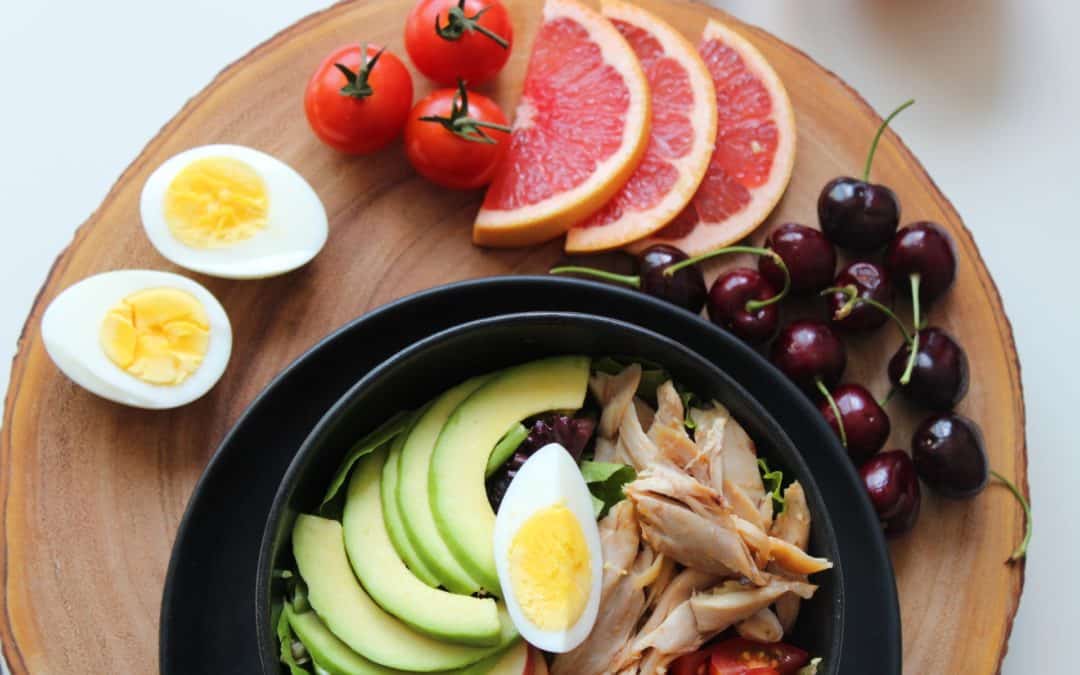So recently someone asked me to explain the paleo diet in a nutshell. By far, my favorite diet to prescribe in my office is the Paleo diet. Why is that? Well, there are a number of reasons.
Why the Paleo Diet is My Favorite Healing Diet
It’s low antigen, meaning that your body does not see it as a stress, and so it does not stress your immune system. A stressed immune system is a major contributing factor to many health problems.
It’s high nutrient. Up to 70% of the standard American diet is made up of sugar, refined wheat, corn, dairy, and soy. While it can be argued that dairy is high in protein, calcium, certain vitamins, minerals, and essential fatty acids, dairy tends to be an immune aggravator for a large number of people. Sugar, refined wheat, and corn are mostly just empty calories, meaning that they supply little in the way of vitamins, minerals, fiber, essential fatty acids, and protein. Therefore, the standard American diet is very low-nutrient, but very high calorie, hence the epidemic of obesity.
Since the Paleo diet does not include refined grains, sugar, and dairy, it is primarily made up of fruits, vegetables, nuts, seeds, meat, and oils. All of these food substances are very nutrient dense.
The most important thing, however, is that after being in practice as a nutritional natural doctor, I’ve seen it give the best results of any of the other diets I have used over the past 23 years.
Why the Paleo Diet Works
There seems to be a lot of confusion about the Paleo diet though. People think that it’s extremely low carb, or that it’s the keto diet, or something else. That’s why I am putting this together so that I can clarify what the Paleo diet is and isn’t. So here is the Paleo Diet in a Nutshell.
Don’t lose the forest through the trees. The next sentence is the most important one of this article! The reason why the Paleo diet is so successful is because of what it cuts out; grains, refined sugar, and dairy. Honestly, if you just do these three things, you are on enough of a paleo diet to see awesome results! Some people like to split hairs with how much vegetables they should eat, how much fruit they should eat, how much meat they should eat, whatever. Keep in mind that step one is just cutting out grains, refined sugars, and dairy. So let’s look at what is in the Paleo diet after you cut out these things.
What You Can Eat On the Paleo Diet
Vegetables
Any vegetable is allowed on the Paleo diet and pretty much any quantity. Corn is not a vegetable- it’s a grain. The only caveat here is that if you have blood sugar problems, like pre-diabetes or diabetes, or just plain old insulin insensitivity, do not include starchy vegetables or at least use them sparingly (like once a day or a couple of times per week, at least until your blood sugar numbers come back down to optimum). What are starchy vegetables? Mainly potatoes, and sweet potatoes. Once your blood sugar is balanced again, which we verify by a blood test, you may add back in potatoes and sweet potatoes. Here is a list of good vegetables: kale, Brussel sprouts, cauliflower, tomatoes, onions, peppers, asparagus, all lettuces, radishes, turnips, parsnips, carrots, you name it. Try to eat some veggies at each and every meal.
Fruits
Like vegetables, we encourage fruits on the Paleo diet. Like vegetables, if you have blood sugar problems, stay away from high-sugar fruits such as bananas, mangoes, pineapple, and papaya. Otherwise, fruits are a great source of vitamins, minerals, antioxidants, and phytonutrients. Here’s a good list of fruits: oranges, apples, pears, cherries, all berries, lemons, limes, kiwi, grapefruit, and grapes.
Meats
You can eat as much meat as you want on the Paleo diet. If at all possible, try to get primarily grass-fed beef, wild-caught fish, free range chickens, etc. The more natural meat, the more essential fatty acids it has in it and the better they are for you. Included in this section are eggs. Here is a good list of meats: beef, chicken, fish, turkey, eggs (if you’re not allergic), organic bacon and sausage. If you really want extra credit on this diet, try eating fatty fish such as salmon twice per week.
Nuts and Seeds
Nuts and seeds are great sources of fiber, B vitamins, and minerals. Try to get ones that are not fried in industrial seed like corn and soy oils. Unlike vegetables, fruits, and meats, I would limit nuts and seeds to a handful per meal, and/or a handful in between meals as a snack. Some people are a little sensitive to nuts and seeds, so be aware of this. The only “nut” I tell people to avoid is the peanut. That’s because they may contain aflatoxin, which increases the risk of liver cancer 600%. You can’t tell if the peanuts have that or not. Don’t make them part of your daily diet.
Healthy Fats and Oils
As you can see, the Paleo diet is really really simple. If you can concentrate on incorporating vegetables, fruit, meats, nuts, seeds, and oils, while cutting out grains, refined sugar, and dairy, you’ll be doing great. I hope this clears up any questions you may have!
If you’re interested, this article talks more about specific steps you can take on how to implement the Paleo Diet.
There you have it, the Paleo Diet in a Nutshell. If you make some of these changes and feel better, I’d love to hear from you about it!
Yours in superlative health,
Dr. Sheehan

